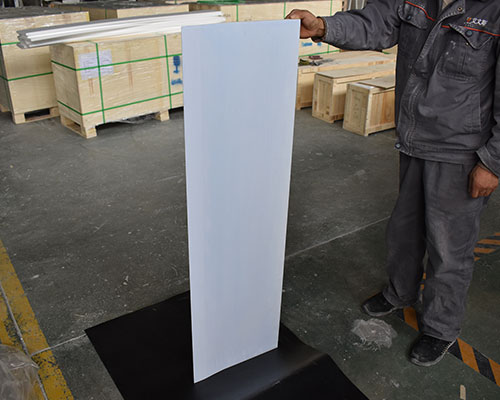Feed Caster Nozzle is a key component of aluminum belt continuous casting machine, and its quality directly affects the quality and output of crawler aluminum foil. Molten aluminum is fed from the elongated casting tip into the nip between two counter-rotating water-cooled rolls. The molten aluminum is cooled when it comes into contact with the rolls and cools as it passes between the rolls, thereby forming a wide cast metal strip of uniform thickness. As long as the liquid metal is supplied to the casting machine, the casting process can proceed continuously.
Feed Caster Nozzle Features:
- Specially processed high-aluminum ceramic casting nozzle material.
- The feed gate can effectively prevent the erosion of the molten aluminum to the gate and prevent the carbonization of the casting billet.
- The fractured structure is a thin and uniform layered fiber structure to prevent the existence of a flocculated structure.
- The working surface coating is uniform and smooth.
- Prevent the occurrence of granular cracks and coating shedding.
- Provide a guarantee for the high quality of the cast-rolled plate.
- Produce casting nozzles of various models and supply methods according to customer requirements.

Preparation work before using Feed Caster Nozzle
1. Adjust the temperature of the molten aluminum in the standing furnace to 750℃±10℃ (the upper limit is taken in winter, and the lower limit is taken in summer).
2.Check whether the runner system is tightly integrated, and put all kinds of vertical plate tools in the right place.
3. Adjust the graphite spraying limit according to the board width, and assemble the front box thermocouple.
4. Start the machine train to check whether the system of each part of the equipment is normal (cooling water).
Feeder Casting Tip position adjustment
1. Lift the grilled casting nozzle assembly to the casting and rolling mill, and align the position on the casting nozzle platform.
2. Adjust the horizontal position of the nozzle to an appropriate value
3. Slowly move the casting nozzle to the roll gap, adjust the vertical and horizontal positions to reach the predetermined length of the casting zone, and observe the best state of the gap between the casting nozzle and the upper and lower rolls.

